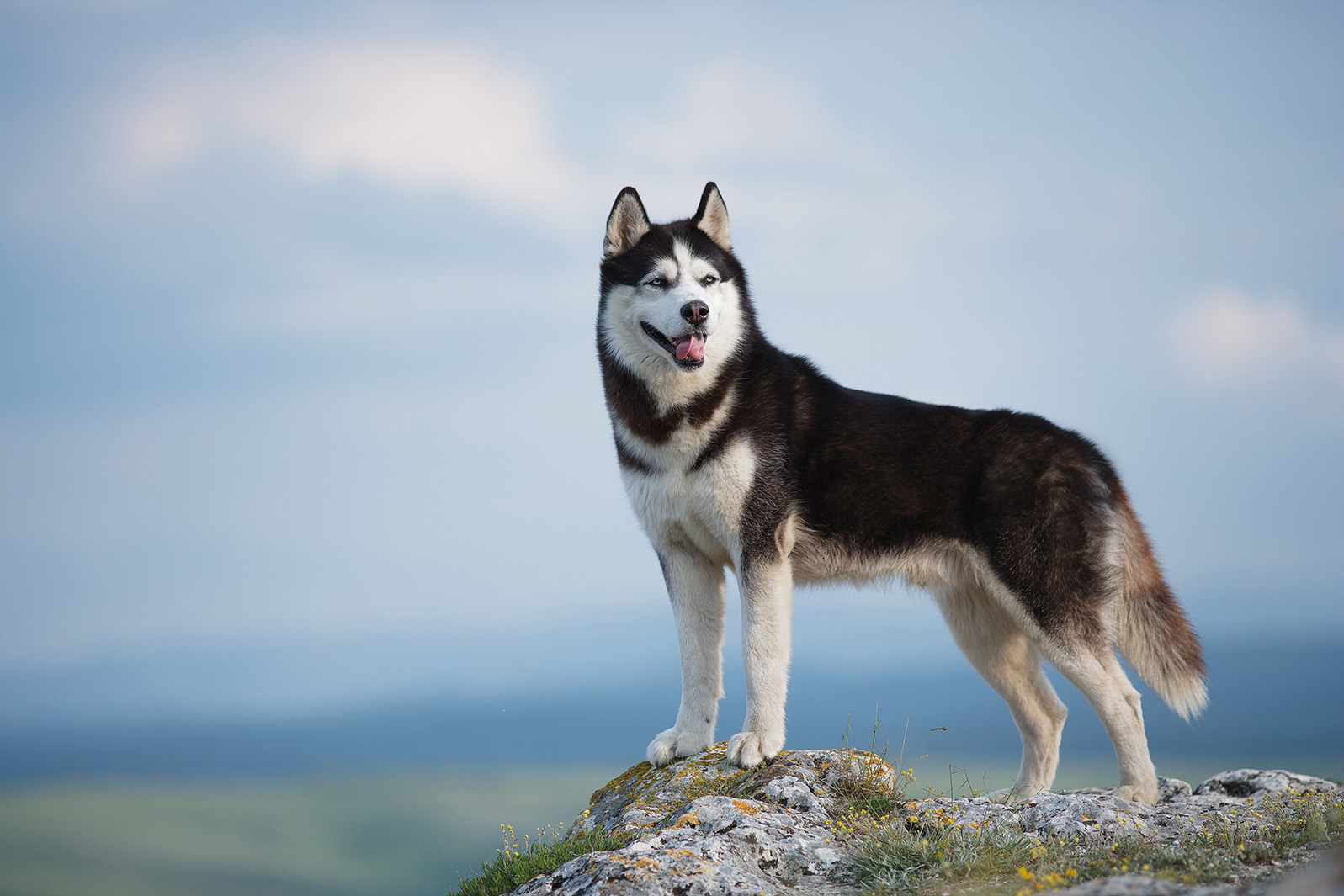Siberian Husky

Description
The Siberian Husky is a striking and energetic dog breed known for its beautiful appearance, strong work ethic, and friendly nature. Originating in the harsh, cold environments of Siberia, these dogs were bred by the Chukchi people to pull sleds over long distances in freezing temperatures. Their primary role was to transport goods and people across vast, snowy landscapes, and they were chosen for their endurance, stamina, and ability to work in teams. Today, Siberian Huskies are popular as companion animals, prized for their vibrant personalities and striking looks, but they still retain the energy and drive that made them excellent sled dogs.
Physically, the Siberian Husky is a medium-sized dog with a well-muscled, athletic build designed for speed and endurance. Adult dogs typically stand between 20 and 24 inches tall at the shoulder and weigh between 35 and 60 pounds. One of the breed's most distinctive features is its thick double coat, which is designed to protect it from the cold temperatures it was originally bred to endure. Their coat comes in a wide variety of colors, including black, gray, red, and pure white, and they often have striking markings, including a facial mask and bright blue, brown, or even heterochromatic (two different-colored) eyes. Their erect triangular ears and bushy tail, which they carry curled over their back, contribute to their striking appearance.
Temperamentally, the Siberian Husky is known for being friendly, outgoing, and independent. These dogs are typically not aggressive, and they are usually good with children and other pets, though they may have a strong prey drive due to their history as hunting and working dogs. They are also highly intelligent, which can make them both easy to train and occasionally stubborn, as they tend to think for themselves. While they are generally affectionate and social, Siberian Huskies can be independent and sometimes aloof with strangers. Due to their high energy and strong pack instincts, they thrive in active households where they can get plenty of exercise and stimulation.
Siberian Huskies require regular physical activity to keep them happy and healthy. Without enough exercise, they can become bored and potentially destructive. They are known to be escape artists, able to dig and climb, so secure fencing is a must if they are allowed outside. Huskies also have a thick double coat that requires regular grooming, especially during shedding seasons, to prevent matting and keep their coat in good condition. Despite their beautiful looks and friendly demeanor, owning a Siberian Husky requires commitment, as they need an outlet for their energy and a structured environment. However, for the right owner, the Siberian Husky is a loyal, lively, and affectionate companion that can bring joy to an active and engaging household.
History
The Siberian Husky is an ancient and iconic breed with origins deeply rooted in the Arctic regions of Siberia. The breed was developed by the Chukchi people, a nomadic tribe in northeastern Siberia, who relied on these dogs for survival in one of the world’s harshest environments. For thousands of years, Siberian Huskies were bred to pull sleds, transport goods, and assist in hunting, showcasing their remarkable stamina, speed, and resilience. Their dense double coat, strong build, and compact size made them well-suited to enduring freezing temperatures and navigating snow-covered landscapes.
The Chukchi people carefully bred the Siberian Husky not only for its physical abilities but also for its temperament. The dogs needed to be friendly and cooperative to work in teams and live closely with their human families. This close bond between the Chukchi and their dogs ensured the breed’s survival and allowed it to thrive as an essential part of Arctic life. For centuries, Siberian Huskies remained largely unknown to the outside world, their reputation confined to the remote Siberian wilderness.
The breed gained international attention in the early 20th century when Siberian Huskies were brought to Alaska for sled dog races during the gold rush. Their speed and endurance quickly outshone the larger, slower freight dogs commonly used in the region. In 1925, the breed’s reputation was solidified during the famous serum run to Nome, Alaska, also known as the "Great Race of Mercy." A team of Siberian Huskies led by Balto helped deliver life-saving diphtheria antitoxin across 674 miles of harsh terrain, saving countless lives and earning the breed worldwide admiration.
The American Kennel Club (AKC) recognized the Siberian Husky in 1930, and its popularity continued to grow as both a working dog and a beloved companion. Today, the Siberian Husky is celebrated for its intelligence, friendly nature, and athleticism. While it remains a favorite for sledding and other canine sports, it is also a cherished family pet, admired for its striking appearance and rich history as a loyal and hardworking breed.
Colors
• Agouti & White
• Black
• Black & Tan
• Black & White
• Black Tan & White
• Brown & White
• Gray & White
• Grey
• Red & White
• Sable & White
• White


